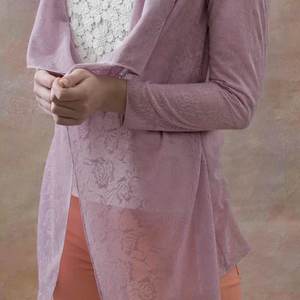Tips for Sewing Linen Knits
Keep cool in easy-to-sew fabric from a natural fiber
Linen is a natural fiber spun from the cellulose inside the stalk of a flax plant. Woven linen fabrics are a favorite of many sewers, but that is not the only way linen fiber can be used. When knitted, it is transformed into a breathable, fluid, semisheer, fine-gauge fabric that is perfect for warm weather fashion. Linen’s natural slubs give this fabric an appealing, rich texture. Dyes permeate linen beautifully, and the colors can be soft and muted or vibrant and bold.

Linen is most commonly blended in knits with spandex for recovery and body. However, it is also available in other blends. Common blends include linen/rayon/spandex, linen/cotton/ spandex, and linen/polyester. Most linen knits are lightweight jerseys, although some midweight knits can be found. ere are also openwork linen knits.
When deciding what to make with linen knits, think flowy and simple. Let the fabric speak for itself. Loose cardigans, T-shirt dresses, and drapey tops and tunics are good choices. Stay away from patterns with a lot of details and seams. Since many linen knits are semisheer, a camisole, slip, or lining may be necessary under garments for modesty. Consider lining or underlining the fabric with nylon tricot.
Working with knit linen fabrics is similar to working with other knit fabrics, but linen knits can be delicate and must be washed and dried with care to prevent fabric distortion or excessive wear. Though knit linen fabrics and garments require more care than synthetic knit fabrics, I love the high-end look achieved with this luxurious fabric. I’ll teach you how to work with linen knits to attain polished results and how to care for garments after…
Start your 14-day FREE trial to access this story.
Start your FREE trial today and get instant access to this article plus access to all Threads Insider content.
Start Your Free TrialAlready an Insider? Log in


































Log in or become a member to post a comment.
Sign up Log in